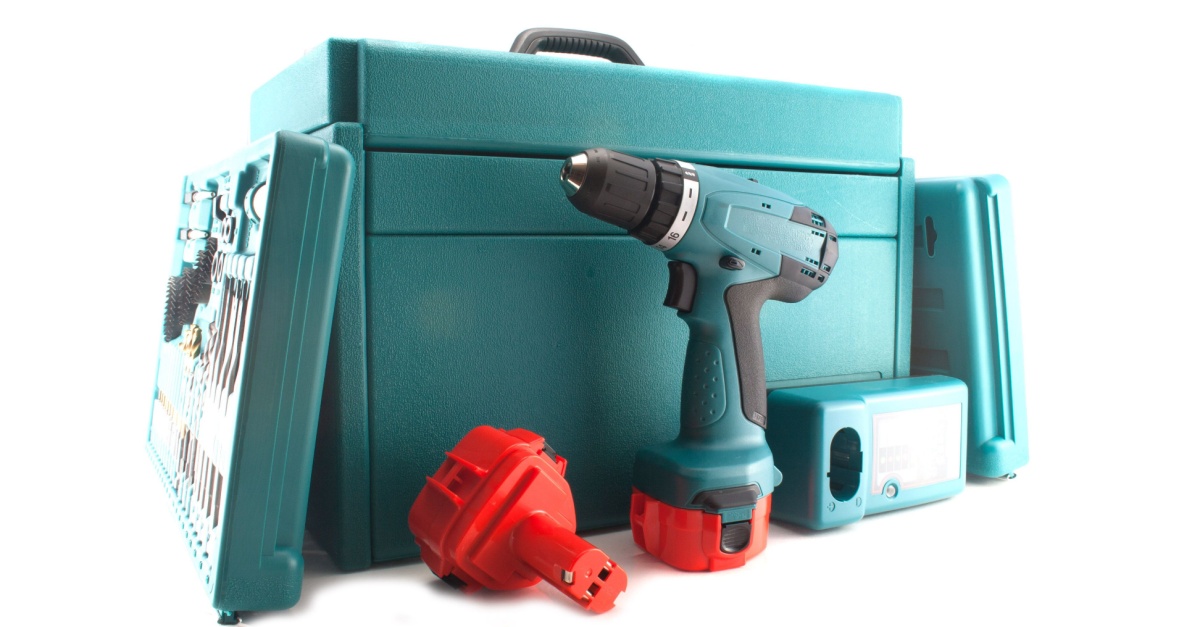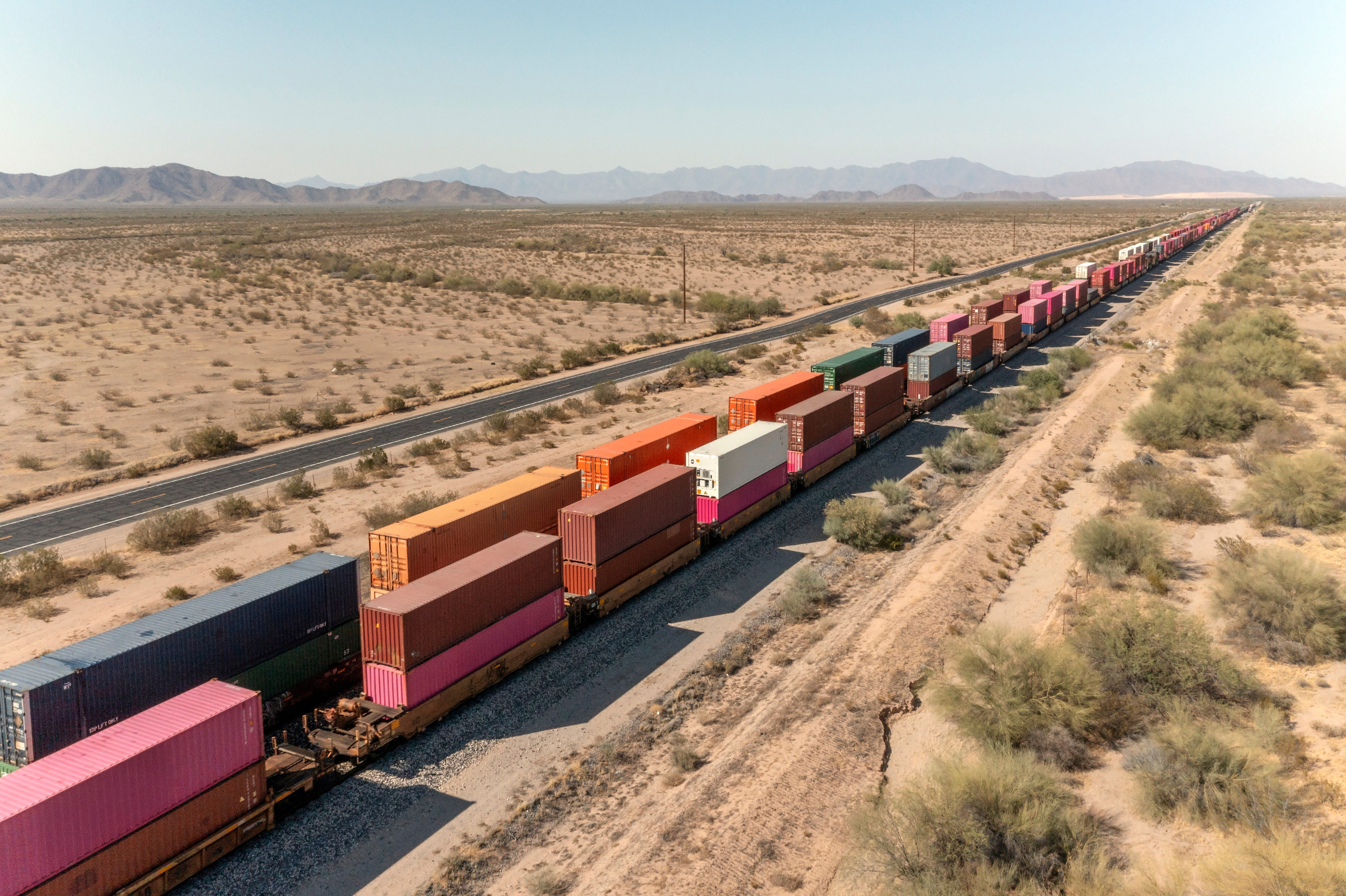Wochenrückblick: Kriminalität zahlt sich in Elektrowerkzeugen aus und Schokolade braucht eine wissenschaftliche Intervention

August 28, 2025
October 24, 2025
x min. Lesedauer

Ihr örtlicher Baumarkt verkauft möglicherweise gestohlene Fracht, Supply-Chain-Experten sind besorgter denn je und Pharmazeutika schwimmen ungeplant im Meer. Diese Woche hat uns 4,5 Millionen $ eingebracht Ladungsdiebstahl Operation, die sich als DJ General Tool & Wire tarnt, komplett mit gestohlenen Dyson-Staubsaugern und Milwaukee-Bohrmaschinen. Die Beschaffungsexperten haben gerade die größte Sorge seit Beginn der Aufzeichnungen erreicht, da die geopolitischen Spannungen die Kosten in die Höhe treiben. In der Zwischenzeit gingen temperaturkontrollierte Medikamente im Wert von 1,6 Millionen Dollar vor Südafrika über Bord, Mars entschied, dass die Krise in der Schokoladenversorgung extreme Maßnahmen zur Genmanipulation erforderte, und Schneider Electric bewies, dass Nachhaltigkeit funktionieren kann, indem 1.000 Lieferanten Anreize zur Senkung der CO2-Emissionen geboten wurden. Nur eine weitere Woche auf der Welt, in der alles, was Sie kaufen, eine Hintergrundgeschichte hat.
Handwerkszeug: Wenn Ihr örtlicher Baumarkt eine Front für Frachtdiebstahl ist
Du gehst in einen Baumarkt und erwartest Hämmer und Nägel, kein kriminelles Imperium im Wert von 4,5 Millionen Dollar an gestohlener Fracht. Doch genau das hat die Polizei herausgefunden. als sie die beiden Standorte von DJ General Tool & Wire in Los Angeles County überfielen.
Das ultimative DIY-Projekt ist schief gelaufen
Besitzer Dojoon Park, 41, verwandelte seine Ladenfronten in etwas weitaus Lukrativeres als den Verkauf legitimer Elektrowerkzeuge. In seinen Regalen befanden sich angeblich gestohlene Dyson-Staubsauger, Milwaukee-Bohrmaschinen, DeWalt-Schleifmaschinen und Makita-Geräte, die alle aus Zügen, Lastwagen und Frachtschiffen gehoben wurden, bevor sie zu ahnungslosen Kunden gelangten. Das Team von Polizeichef Jim McDonnell arbeitete mit Union Pacific und der Polizei von Port of LA zusammen, um die Waren von den ursprünglichen Raubüberfällen bis zum Einzelhandelsbetrieb von Park zurückzuverfolgen, der die angesagten Waren Berichten zufolge sowohl im Geschäft als auch online verkaufte.
Gefängniszeit für Elektrowerkzeuge
Staatsanwalt Nathan Hochman nimmt kein Blatt vor den Mund, was die zukünftigen Unterkünfte von Park angeht. Die Anklage sieht Höchststrafen von Jahren Staatsgefängnis vor, und die Staatsanwaltschaft plant, das Buch gegen alle Beteiligten vorzuwerfen. Auch diese Büste ist Teil einer größeren Razzia. Die Polizei hat allein in diesem Jahr gestohlene Fracht im Wert von fast 4 Millionen US-Dollar wiedergefunden, darunter Bitcoin-Mining-Computer im Wert von 2,7 Millionen US-Dollar von einem anderen organisierten Ring. Der stellvertretende Chef Alan Hamilton verspricht, dass weitere Verhaftungen bevorstehen, und alle, von den ersten Dieben bis hin zu den letzten Zaunbetreibern, sind Freiwild.
Ihre Lebensmittelrechnung hat gerade ein geopolitisches Upgrade erhalten
Das CIPS-Pulsumfrage für das zweite Quartal 2025 kam gerade heraus, und die Ergebnisse sind gelinde gesagt besorgniserregend. Nachdem im Rahmen der Umfrage 200 Einkaufsexperten befragt wurden, um ihre Panikstufen in der Lieferkette auf einer Skala von 1 bis 7 zu bewerten, deuten die Ergebnisse darauf hin, dass jeder, der isst, fährt oder Waren kauft, Probleme hat.
Einkaufsmanager stehen vor „beispiellosen Herausforderungen“
Beschaffungsexperten erhöhten ihre Sorgenzähler in den nächsten drei Monaten auf 4,57 von 7 Punkten (gegenüber 4,36 im ersten Quartal) und wählten sie für die nächsten 12 Monate auf 5,03 (gegenüber 4,91 im ersten Quartal). Dies sind die höchsten Werte seit Beginn der Aufzeichnungen, was bedeutet, dass erfahrene Veteranen der Lieferkette, die unzählige Stürme überstanden haben, ihre Notfallausrüstung jetzt zweimal überprüfen. Der CIPS-Ökonom John Glen drückte es unverblümt aus: Einkaufsmanager stehen vor „beispiellosen Herausforderungen“, da Handelsstreitigkeiten und Spannungen im Nahen Osten einen perfekten Sturm der Störungen auslösen. Es überrascht nicht, dass 53% der Befragten mit dem Finger auf geopolitische Faktoren als Hauptverursacher der aktuellen Engpässe zeigen.
Fünf Kategorien haben gerade den Jackpot für Preiserhöhungen geknackt
Machen Sie sich bereit: Fünf Ausgabenkategorien prognostizieren jetzt Preiserhöhungen von über 10% (im ersten Quartal waren es nur drei). Versand und Logistik sowie Erdöl und Bergbau liegen mit 22% an der Spitze; Chemikalien und Pharmazeutika liegen bei 17%, Lebensmittel und Getränke bei 14% und verarbeitete Metallprodukte runden die Liste mit 13% ab. Aber egal, was die Leute glauben, dass es zu stärkeren Preiserhöhungen kommen wird, die Realität sieht so aus, dass Schockwellen alles treffen könnten, von Medikamenten bis hin zu Heizkosten, was Glen als „beispiellose Herausforderungen“ bezeichnete.
Wenn Medikamente im Wert von 1,6 Millionen Dollar ein unvorhergesehenes Bad im Meer nehmen
Manchmal fällt Ladung über Bord. Manchmal handelt es sich bei dieser Ladung um temperaturempfindliche Arzneimittel im Wert von über 1,5 Millionen $. XL Specialty Insurance Company Limited Nachdem die M/V MSC Antonia einen schrecklichen Tag im Südatlantik hatte, musste sie einige große Schecks ausstellen, und jetzt will sie ihr Geld von den Schifffahrtsgiganten zurück, die sie für das Chaos verantwortlich macht.
Zwanzig Grad und schnell sinkend
Die Probleme begannen am 28. August 2024, als Container mit medizinischen Lösungen und pharmazeutischen Produkten beschlossen, spontan vor der Küste Südafrikas zu tauchen. Die Ladung war von Nhava Sheva und Hyderabad, Indien, nach Savannah, Georgia, und Memphis, Tennessee, gereist — mit strikten Anweisungen, durchgehend eine Transporttemperatur von 20 Grad Celsius (68 Grad Fahrenheit) aufrechtzuerhalten. Stattdessen gingen bei dem, was in der Klage als „Zusammenbruch des Ladens“ bezeichnet wird, mehrere Container über Bord, während andere durch denselben Vorfall beschädigt wurden.
Folgen Sie der Spur des Geldes
XL Specialty zahlte 1.346.886,52$ für eine Charge verlorener Ladung und 263.14,12$ für eine weitere aus (insgesamt etwa 1,6 Millionen $) und reichte dann am 18. August 2025 umgehend Klage gegen MSC Mediterranean Shipping Company S.A., Expeditors International of Washington Inc. und DSV Ocean Transport A/S ein. Der Versicherer trat durch Abtretungsrechte in die Fußstapfen der ursprünglichen Ladungsbesitzer und will nun, dass die Angeklagten die Kosten erstatten Ich benutze sie für jeden Cent. Angesichts der Tatsache, dass Frachtbriefe und vertragliche Verpflichtungen auf die Gerichte in New York als den richtigen Gerichtsstand hinweisen, hat XL Specialty seinen Fall dargelegt und wartet nun ab, wie die Reedereien auf ihre Preisrechnung reagieren werden.
Mars wechselt in den vollen Wissenschaftsmodus, um Ihre Snickers zu retten
Mars hat gerade einen Deal gemacht, der nach Science-Fiction klingt, aber nach Überleben schmeckt. Das Süßigkeiten-Imperium hinter deinem Lieblingsschokoladenfix steckt Zusammenarbeit mit Pairwise, ein sieben Jahre altes Biotech-Startup, soll die DNA von Kakaopflanzen mithilfe der CRISPR-Genbearbeitung neu schreiben. Zweifellos erfordern verzweifelte Zeiten verzweifelte Mittel: Schokolade steckt in ernsten Schwierigkeiten, und niemand möchte in einer Welt leben, in der ein Snickers-Riegel 10$ kostet.
Die Schokoladenapokalypse ist real
Die globale Schokoladenkrise schlägt hart zu. Westafrika produziert 70% des weltweiten Kakaos, aber Dürre, Krankheiten und sterbende Bäume dezimieren die Ernten. Die Verzweiflung ist echt. Hershey hat Einzelhändler im Juli mit massiven Preiserhöhungen belegt und die Kakaokosten als „beispiellos“ bezeichnet, während er heimlich noch mehr Erdnussbutter und Waffeln in Riegel stopfte, um die Schokolade noch weiter zu verlängern. Dem Schweizer Riesen Lindt geht es nicht besser. Er beobachtet, wie Kunden fliehen, während die Preise in die Nähe von Rekordhochs steigen. Der CEO von Lindt räumte am 1. August sogar ein, dass die westafrikanischen Farmen weiterhin von unerbittlichen Pflanzenkrankheiten heimgesucht werden, wodurch der gesamte Markt „volatil“ wird.
Kommen Sie zu den Gen-Hackern
Der Mars sitzt nicht herum und hofft, dass die Kakaobauern es herausfinden. Es hat die Fulcrum-Plattform von Pairwise lizenziert, die die Pflanzenentwicklung viel schneller beschleunigt als die Pflanzenzüchtung der alten Schule. Pairwise hat bereits mit kernlosen Brombeeren und Senfgrün bewiesen, dass sie das schaffen können. Carl Jones vom Team für Pflanzenwissenschaften von Mars sagt, sie wollen, dass CRISPR Pflanzen hilft, sich „besser an klimatische Herausforderungen, Krankheitsdruck und Ressourcenbeschränkungen anzupassen“. Mit anderen Worten, sie entwickeln extrem widerstandsfähigen Kakao, der jede Klimastörung übersteht, die als Nächstes kommt — und gleichzeitig verhindert, dass der Konsum von Schokolade das Budget sprengt.
Wie Schneider Electric Nachhaltigkeit in Lieferkettengold verwandelte
Die meisten Unternehmen reden über ein großes Nachhaltigkeitsspiel und sehen dann zu, wie ihre Lieferketten Kohlenstoff auspumpen, als wäre es 1995. Schneider Electric entschied sich jedoch dafür behebe das Problem wirklich.
Der Weckruf für 1.000 Lieferanten
Ard Verboon, Chief Procurement Officer von Schneider Electric, hat bei der Einführung von The Zero Carbon Project im Jahr 2021 nicht herumgespielt. Er fasste die 1.000 wichtigsten globalen Lieferanten von Schneider zusammen — diejenigen, die für 65% des Unternehmens verantwortlich waren Scope-3-Emissionen— und gab ihnen einen Fahrplan zur Dekarbonisierung. Der dreistufige Prozess (Analytics, Ambition, Action) klingt einfach, aber die Ergebnisse sprechen Bände: eine Reduzierung der weltweiten betrieblichen Emissionen um 42% und 700 Unternehmen verfolgen nun ihre CO2-Auswirkungen. „Wir können es uns nicht leisten, unsere Lieferkette nicht nachhaltiger zu gestalten“, erklärt Verboon, „und wir werden das nicht alleine erreichen.“
Die Zahlen lügen nicht über Materialien
Die globale Materialgewinnung stieg von 30,9 Milliarden Tonnen im Jahr 1970 auf 95,1 Milliarden Tonnen im Jahr 2020, und wir stehen vor einem Anstieg von 60% bis 2060, wenn niemand den Kurs ändert. Schneider Electric verstand die Mathematik und drehte hart um. Das Ziel für 2025:50% kohlenstoffarme Materialien in Produkten, 100% recycelte Kartonverpackungen und Partnerschaften zur umweltfreundlichen Gewinnung von Kunststoffen, Stahl und Aluminium. Seit 2022 werden Lieferanten im Rahmen des Programms „Menschenwürdige Arbeit“ von Schneider dazu gebracht, die Mindestanforderungen zu übertreffen, und im Rahmen der Partnerschaft mit der WageIndicator Foundation 2024 geht es direkt um faire Löhne. Intelligente Unternehmen lösen Probleme, bevor sie explodieren.
Erfahre mehr als nur, wo deine Sachen sind
In Baumärkten laufen Diebstahlringe, Medikamente fallen ins Meer, Lieferketten im Zusammenbruch. Alle haben einen gemeinsamen Nenner: Niemand wusste, wo sich ihre Ladung befand, bis es zu spät war, geschweige denn irgendeinen Hinweis auf ihren Zustand. Aber mit Sichtbarkeit der Lieferung in Echtzeit und Tracking in Echtzeit In Ihrem Arsenal können Sie verhindern, dass Waren zum Zahltag anderer werden, böse Überraschungen im Keim ersticken und verhindern, dass Sie zur nächsten millionenschweren Katastrophengeschichte werden, die Schlagzeilen macht.
Bewaffnen Sie sich mit Innovation: lassen Sie Tve Nehmen Sie eine Vorreiterrolle bei der Transformation Ihrer Lieferkettenabläufe ein. Machen Sie sich mit der Zukunft der Logistik vertraut —fange noch heute mit Tve an.


